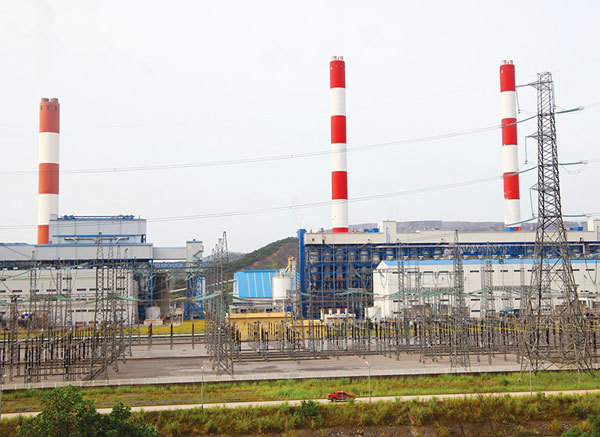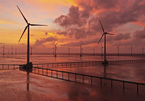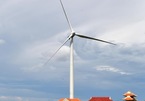However, several experts evaluate the move as a signal for Vietnam to step up the transition from fossil fuels to renewable energies.
 |
| Experts point out that dependence on coal will harm attempts to reach emissions targets. VIR Photo: Le Toan |
President Moon Jae-in at the Leader’s Summit on Climate on April 22 announced that his country, South Korea, would stop investing in coal power abroad. Meanwhile, Vietnam is considering expanding coal-fired power projects in its most recent Power Development Plan 8 (PDP8).
South Korea, along with China and Japan, are the biggest sources of financing for coal-fired power projects in Vietnam. From 2008 to 2018, the former provided approximately $10 billion for coal-fired thermal power projects abroad, including for Vietnamese projects like Mong Duong 2, Long Phu 1, Vinh Tan 4, and Nghi Son 2, according to the country’s non-profit organisation Solutions for Our Climate (SFOC).
Korea Electric Power Corporation (Kepco) last October invested $189 million in a 40-per-cent stake in the Vung Ang 2 thermal power project in the central province of Ha Tinh, with the financial backing of the Export-Import Bank of Korea. A related pre-feasibility study of the Korea Development Institute showed that the project caused Kepco a loss of $84 million.
Lack of funding
Kepco’s move was met with opposition from the international community as it ran counter to the South Korean government’s new Green Growth Policy. Under pressure from environmental activists, on October 28, Kepco officially announced that it would stop investing in overseas coal power projects after the Vung Ang 2 project.
South Korea’s decision to exit the coal-fired market is expected to have an impact on projects and emission reductions in Vietnam. According to Sejong Youn, head of SFOC, the termination of his country’s overseas coal-power investments is a signal that the low prices for coal in Asia are coming to an end.
“The Vietnamese government should review its coal power development plan as these projects are becoming less financially viable,” recommended Youn. “With the Vung Ang 2 thermal power project in the start-up phase, the South Korean and Vietnamese governments should work together to convert this project into a renewable energy project, as this will bring benefits to both countries in achieving their climate goals.”
Japan is also being criticised for providing low-interest loans to coal-fired power projects in Indonesia and Vietnam through the Japan Bank for International Cooperation. Last July, Japan tightened lending terms for overseas coal power projects, accepting loans only for projects in countries that plan to reduce emissions or have no possible replacement resolutions.
Prime Minister Suga Yoshihide announced an increase in Japan’s Nationally Determined Contributions that by 2030, the country would reduce emissions by 46-50 per cent compared to 2013 levels.
The plan to put the Vinh Tan 3 coal-fired power plant in Vietnam’s south-central province of Binh Thuan into operation in 2024 was voided as Mitsubishi Corporation withdrew from this project despite participating with a 49-per-cent stake. With the total investment of about $2 billion, Vinh Tan 3 was considered the largest coal power project in Vinh Tan Power Centre. Some major banks had poured capital into Vinh Tan 3, including Industrial and Commercial Bank of China, Standard Chartered, and HSBC, which has already withdrawn its capital from the project.
Up to this point, the Japanese government has not made any official commitment to stop financing overseas coal power. Meanwhile, Yuki Tanabe, programme coordinator of the Japan Center for A Sustainable Environment and Society, said that his country needs to announce such a commitment.
Affordable financing
On February 21, Quang Tri People’s Committee announced on its portal that the prime minister had approved the investment policy of the Quang Trach II thermal power plant project. The project under the management of Electricity of Vietnam in Hon La Economic Zone has a capacity of 1,200MW with the total preliminary investment of $2.09 billion. The plant is expected to commercially operate its first unit by 2028, with the second going online a year thereafter.
As of now, coal-fired power remains the preferred energy type of Vietnam – the fastest-growing coal-fired power market in the region. Since 2015, more than half of the existing capacity (10.7GW) has been added, with the current capacity amounting to 20.4GW, accounting for about 30 per cent of the national power generation structure. According to PDP8, by 2030 another nearly 17GW of coal power will be added.
The Vung Ang 2 thermal power project with a capacity of 1.2GW, if built, is expected to emit 6.6 million tonnes of greenhouse gas per year and up to 200 million tonnes over a 30-year-long operating life.
“Vietnam’s expansion in coal-fired thermal power is facing much criticism for going against the country’s plan to reduce its carbon emissions and fulfil its commitment to achieving the 9-per-cent emission reduction target by 2030,” said Nguy Thi Khanh, director of the Green Innovation and Development Centre.
Khanh worried that the plan will also prevent Vietnam from implementing the climate goals of the Paris Agreement. “Environmental problems will not be completely resolved when new coal power plants are set up and continue to operate at least until 2050, even until 2070. Total emissions could then increase continuously from 9,500 tonnes per year in 2020 to over 42,000 tonnes by 2035, thus about four times,” she said.
Khanh warned that shortcomings similar to the previous PDP7 may recur with the newest itineration, including difficulties in capital mobilisation and disapproval of locals and authorities – the main reasons for delaying coal projects since 2016. Even in 2020, there was only one unit with 0.6GW put into operation, resulting in only about 57.6 per cent of the plan being achieved under the revised PDP7.
Data from many sources shows that Vietnam is dependent on outside coal supply. According to Jakob Stenby Lundsager, a long-term advisor to the Vietnam-Denmark Energy Partnership Programme, Vietnam has imported coal since 2015 and there is a trend that these imports will triple by 2030 and increase eight times by 2050.
If developing coal power according to the PDP8, 86 per cent of new coal capacity must use imported fuel, while these imports are forecast to face many difficulties. Nguyen Tuan Anh, head of the Energy Efficiency and Sustainable Development Department under the Ministry of Industry and Trade (MoIT), confirmed that coal resources depend on imports and a new port must be built to import coal.
Ngo Duc Lam, former deputy director of the Electricity and Renewable Energy Authority under the MoIT commented, “In power development strategies and plans, policymakers still focus heavily on coal imports, while the potential for renewables is an opportunity to change Vietnam’s mindset towards one of an energy-exporting country.”
The oil crisis of the 1970s startled European nations into realising their dependence. Denmark, when it was still one of the import-dependent countries, implemented a robust energy transition in which it reviewed and analysed its policies before the country became an exporter of energy as it is today.
“Vietnam needs to change perceptions and learn from Denmark’s experience in converting its energy sources,” Lam said.
However, South Korea’s decision to move out of the coal-fired investment market will impact domestic emissions and coal-fired power projects in Vietnam. While such divestment trends are increasingly strong in the world, Vietnam may use the opportunity to accelerate the complete transition from fossil fuels to clean energy.
VIR

Forum discusses challenges to sustainable energy transition
Experts discussed opportunities and challenges in sustainable energy transition at a recent forum in Hanoi, which focused on the development of green, clean, and renewable energy against the backdrop of international capital moving into the country.

Renewable energy to become a trend
According to experts, the dominant energy technology in the future will be energy storage devices, solar panels, clean hydrogen and wind energy.